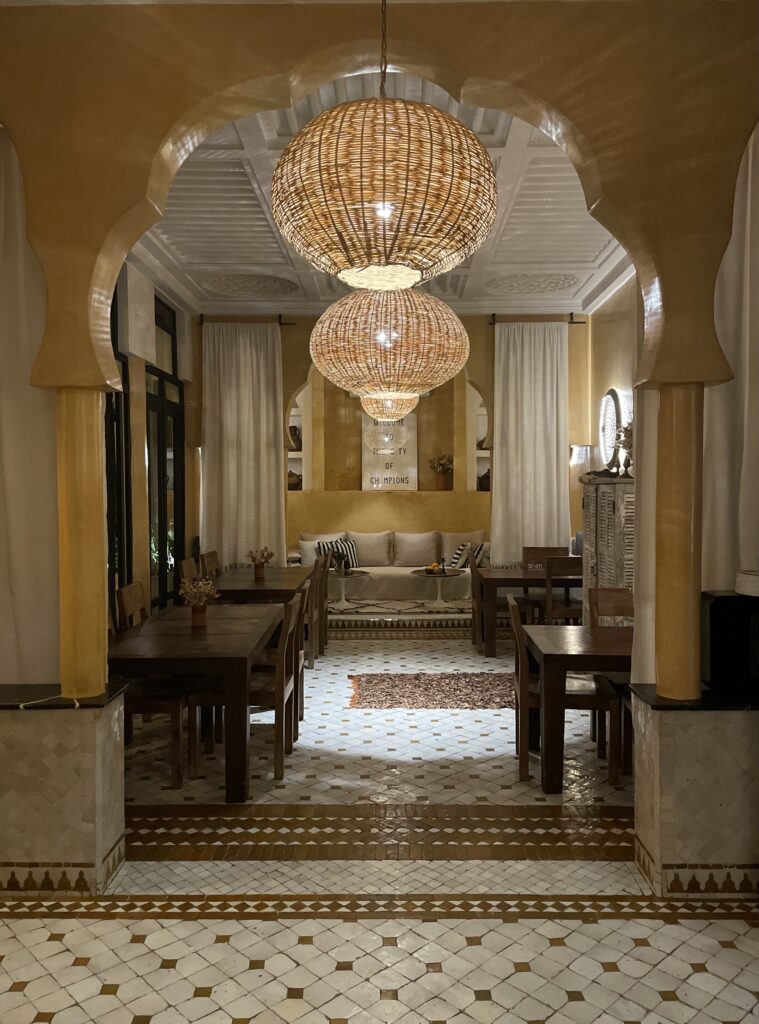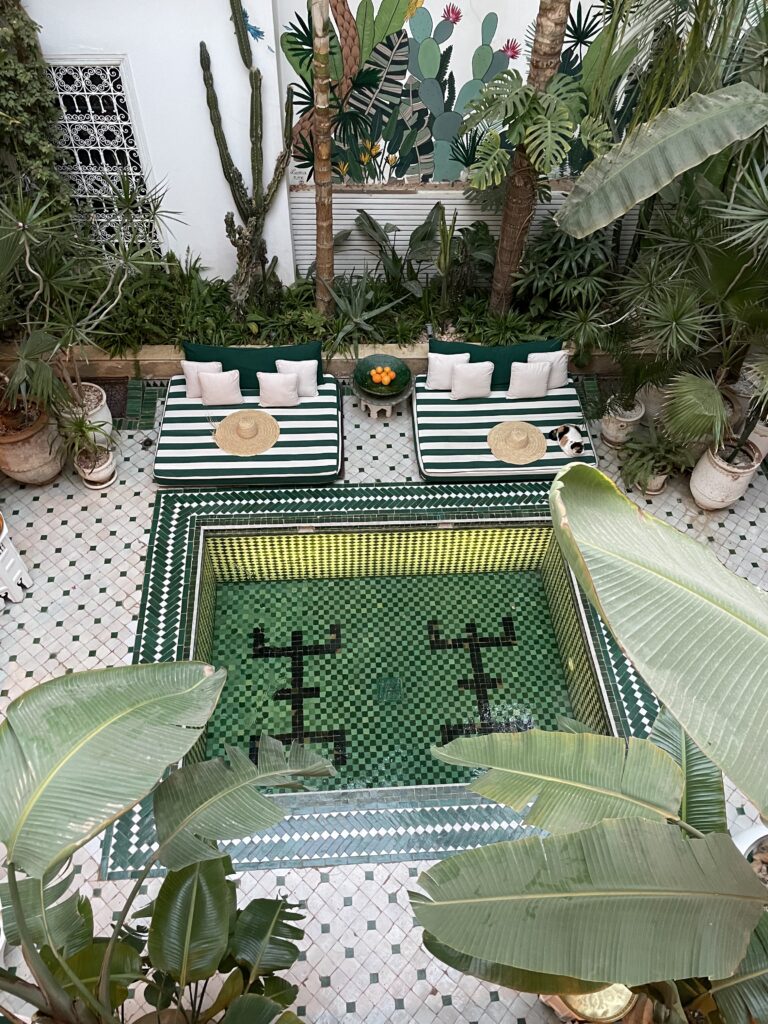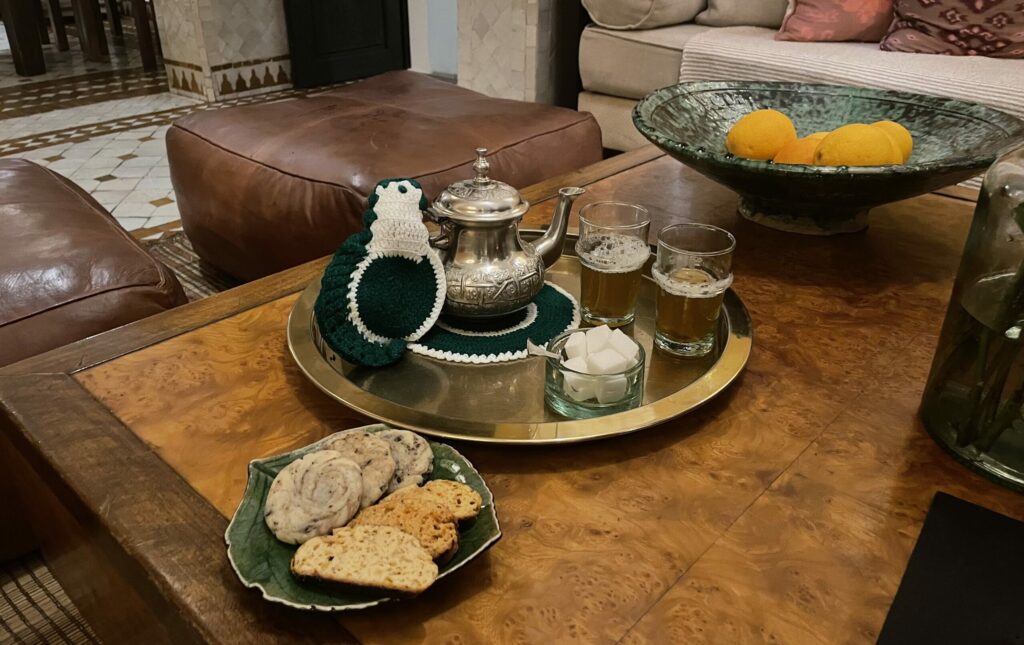Riad Stays
During our trip to Morocco earlier this year, many of our hotel stays were at riads. These were a specific type of Moroccan home, known for their enclosed, central courtyard and gardens. Located within the medina, or old city, these were built in a way for privacy and peace. With the windows generally facing into the center courtyard, families could enjoy the day and gardens while still maintaining familial intimacy and privacy. Every one we stayed at was beautiful, with intricate architecture and an incredible focus on details. As we travelled to each riad, we were often greeted with Moroccan mint tea. Though historians disagree on its origins – perhaps from the Phoenicians in the 12th century BC or even earlier by the Amazigh – it has since become a staple and a core part of Moroccan life.


Moroccan Mint Tea
To make traditional Moroccan Mint Tea, only a few ingredients are needed:
Loose Gunpowder tea
Fresh mint sprigs (traditionally spearmint)
Sugar
Boiling water (of course!)
The art of Moroccan mint tea is an integral part of daily life in Morocco, with traditional tea ceremonies happening all throughout the day – to welcome friends and guests, as a refreshment with meals, or even to help hydrate during a long day’s work. The tea ceremony begins with the equipment and ingredients brought out on a large tray, and is traditionally prepared while chatting with your guests.

Ceremonial Mint Tea Process
In a clean pot, the gunpowder tea and half of the boiling water are left to simmer for a minute, before pouring the water in a separate cup. Some of the remaining water is then used to swirl out the rest of the tea leaves, and discarded. At this time, the cup of brewed tea goes back in the pot, along with the fresh mint, sugar, and remaining water. It is kept at a low heat until it boils, and then poured into cups. Once it is cool enough to hold, it is ready to be enjoyed!
When poured, the teapot starts low to the glass, and then is raised high before being brought back down. This act, often pouring at a height of six feet, is said to be a sign of respect and is an integral part of the ceremony.
Brewing Memories
Having a cup of tea quickly became one of my favorite parts of our trip to Morocco. The smell was incredibly soothing, and the simple relaxation it accompanied was a welcome respite from the often busy streets just outside. Particularly in our stay in Marrakesh, at Riad Yasmine, every time I went down to read or do some work someone would offer me a fresh pour. They would then brew more as many times as I wanted. Just writing this bring me right back to the couches, and to the sound of the fireplace next to me, and the easy conversations had with other guests as we sipped our tea.
I found a saying on the blog Moroccanzest, that the first glass of Moroccan mint tea is as soft as life, the second as strong as love, and the last as bitter as death. As the tea continues to steep in the pot, it only continues to get stronger, and the flavors change slightly with each cup you drink.
Learn More
I was able to find a lot of traditional recipes online, so please visit some of these other blogs to make your own at home! We are, of course, far from experts on this important tradition. Some of the other sources I used for the history and significance of the riads and mint tea are listed here as well:
https://www.mymoroccanfood.com/home/2015/4/27/moroccan-mint-tea
https://moroccanzest.com/authentic-moroccan-mint-tea-recipe/
https://moroccanzest.com/riad-architecture-history-design/